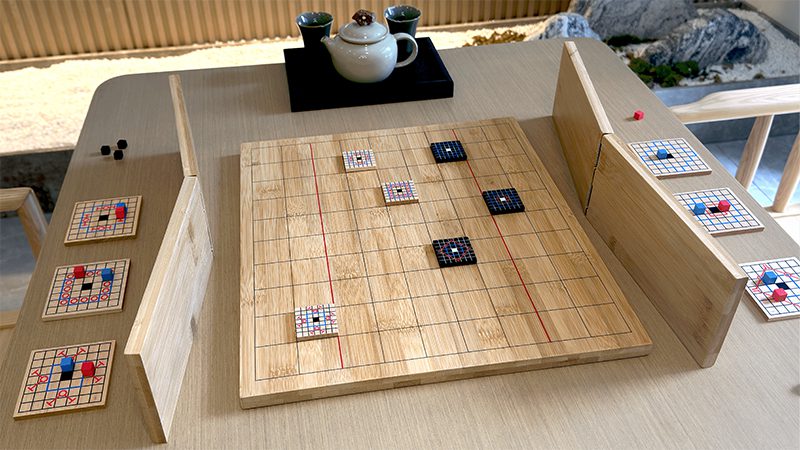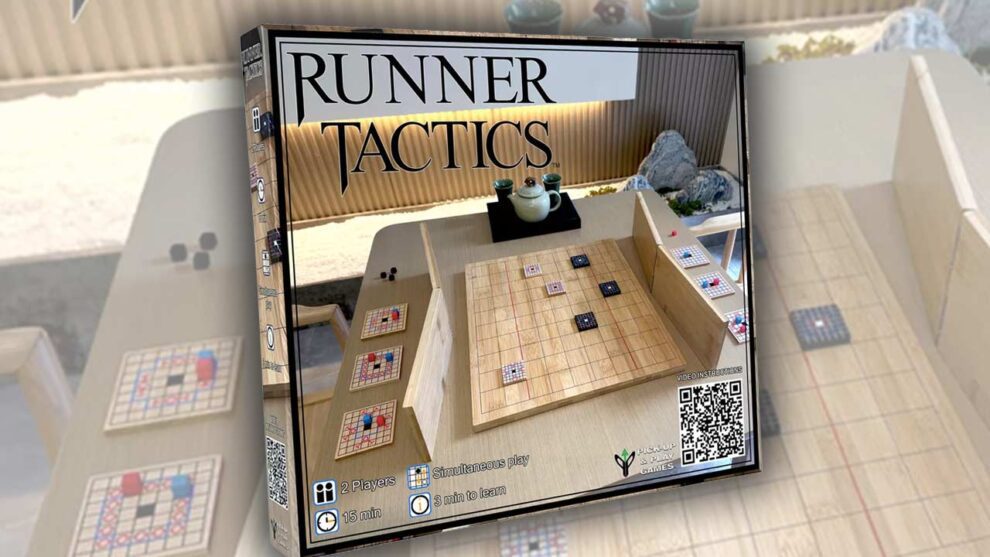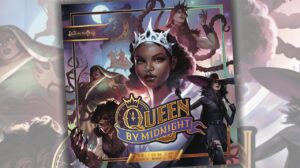Disclosure: Meeple Mountain received a free copy of this product in exchange for an honest, unbiased review. This review is not intended to be an endorsement.
As a board game reviewer, I frequently venture into the unexplored realms of tabletop gaming. While the masses hunt for the latest offerings from first-rate publishers, I find a unique excitement in unearthing games yet to grace store shelves or Kickstarter campaigns. Sometimes this leads to interesting gems, while others remind me why not every game is published.
Runner Tactics is a game where these two perceptions are engaged in endless combat. While its core concept is undeniably intriguing, certain aspects of its product design and gameplay raise questions about its readiness for the spotlight. Of course, for you to understand where I’m coming from, we need to delve into this game’s mechanisms.
In a few words, Runner Tactics is a strategic, grid-based, two-player programming game where the players will draft a team of three members for a 3 vs 3 match. Instead of abilities, each member has their own movement range and attack pattern. On the field itself, there are two lines, similar to a North American Football field. The objective is easy: Eliminate your opponent’s team or, at the end of any round, have more members on the other side of the line than your opponent.
Gridiron Hussle
Turns are as simple as the objective. You put a big wooden player shield in front of you and program your intentions in secret while your opponent does the same. All you’re doing here is using cubes to denote where the team member will move and their attack pattern. Once you and your opponent are done with the programming, the player shields are lifted and the actions are executed.
Movement happens first and simultaneously. If any pieces “collide” with each other, they are eliminated—save for one particular character called the Berserker. After all the players have moved to their new positions, attacks are then executed all at once. Anyone hit by these attacks is eliminated, including friendly teammates.
That is the game’s entire play loop until one of the two objectives is met. It’s obvious the game is clearly aiming for the market of quick two-player games with highly engaging decisions. I can easily see this game as an alternative to the likes of Hive, Santorini, and Onitama.

Wooden Warriors
Runner Tactics is a game that is far more interested in reading your opponent’s mind followed by tactical decisions. The game revolves around anticipating your opponent’s moves while strategically positioning your team. You will engage in a delicate dance of advancement and evasion, capitalizing opportunities to slip past enemy lines or launch precise counterattacks. The experience is akin to orchestrating three simultaneous fencing matches, demanding split-second decisions and keen spatial awareness across multiple fronts.
Even the decisions before the match begins play a huge portion of your success. Players engage in a crucial drafting phase, carefully selecting their three-person team from a pool of diverse units. Each piece is defined by its unique combination of movement capabilities and attack patterns. Generally, units with more extensive attack ranges are limited in mobility, often restricted to single-space movements. Conversely, pieces with greater movement flexibility tend to have more constrained attack options.
Following the draft, players secretly determine their starting positions. This vital setup presents various tactical options: Do you concentrate your forces on one flank, aiming for a focused assault? Perhaps you opt for a balanced approach, covering all three sectors of the board equally? Or do you embrace a tightly clustered formation, reminiscent of a Roman phalanx, preparing for a united advance?
One Hit Wonder
All of this sounds fantastic, so where do my reservations for this game come in? One observation I had to note is all the units being one hit. Being outnumbered in this game is dangerous. To draw a chess analogy, imagine playing with just three queens—losing one dramatically shifts the balance of power. Having one less unit on the field not only leaves a gap in formation for the opponent to run through, it also means one extra attack pattern likely going for your remaining team members. It makes the game extremely unforgiving.
Because of the relentless nature of the game, the pacing is quick, perhaps too quick. Matches don’t typically last more than five rounds unless the two players are extremely cautious about their moves. Even the designer seems to be highly aware of this, as they recommend a series of matches instead of one, and I wholeheartedly echo that statement.
The most concerning issue I have with Runner Tactics isn’t the game design itself, but rather its product design. Bear with me as I typically don’t do this, especially for prototype games.
The game components are wooden, abstract, and gorgeous. One of the many challenges of reviewing a prototype game that no one has heard of is getting another human being to play with you. In Runner Tactic’s case, it wasn’t as difficult as I thought.

Enter the Wooden Arena
This beauty does have a cost. Since most of the components are wooden and one piece, it means the box size becomes a problem. It doesn’t fit in my game bag, Kallax shelf, or any shelf for that matter. Because of this, it means bringing this game out is a bit unwieldy for people like myself who travel with their board games.
Being a wooden game, it also brings concern about the price point. In this post-COVID world we live in, wood ain’t cheap and inflation is skyrocketing so high that it could start a space program. With so many alternatives to two-player games out there, why settle for something that is likely double the price of what’s out there? Is wood even necessary here when neoprene mats can still provide that luxury experience?
I also must comment on the visual presentation. While the box prominently declares inspiration from video game genres like MOBAs and titles such as Final Fantasy Tactics, this influence is far from apparent in the game’s actual presentation. A worthy inspiration for sure, but you would never know that by simply looking at the game. Everything, from the field to your teammates, is reduced to an austere array of grids and lines, stripped of any fantastical or character-driven elements. Without explicit explanation, players would be hard-pressed to discern that these abstract pieces are meant to embody fantasy archetypes.
Runner Tactics presents a mechanically sound and strategically engaging two-player experience. Its unique blend of team drafting, programmed actions, and positional warfare offers a refreshing take on tactical board games. However, the game’s presentation falls short of its potential. The abstract, minimalist design, while functional, fails to capture the rich thematic fantasy inspirations. This visual disconnect, coupled with potential pricing concerns due to its wooden components, may limit its appeal in a crowded market.











